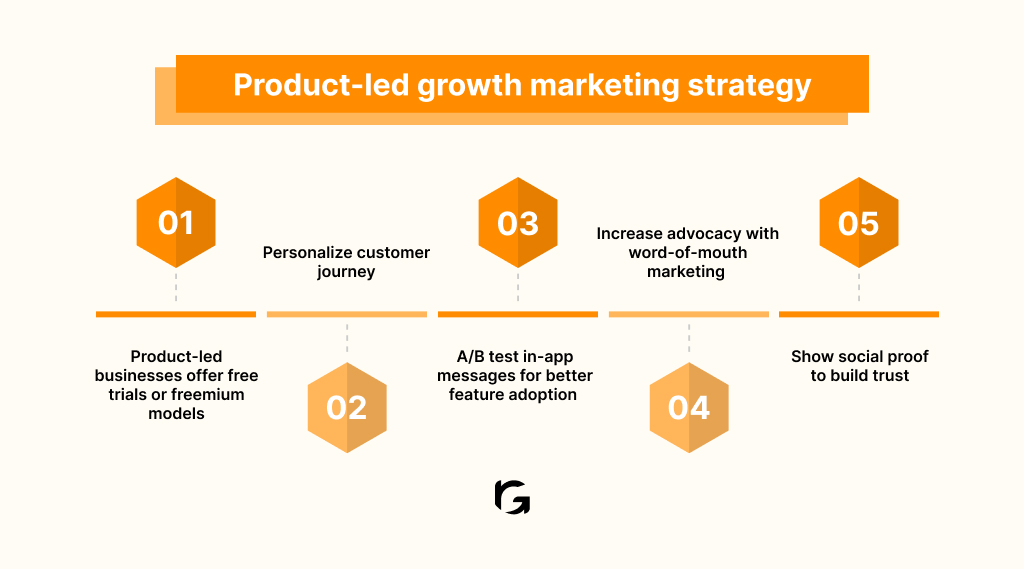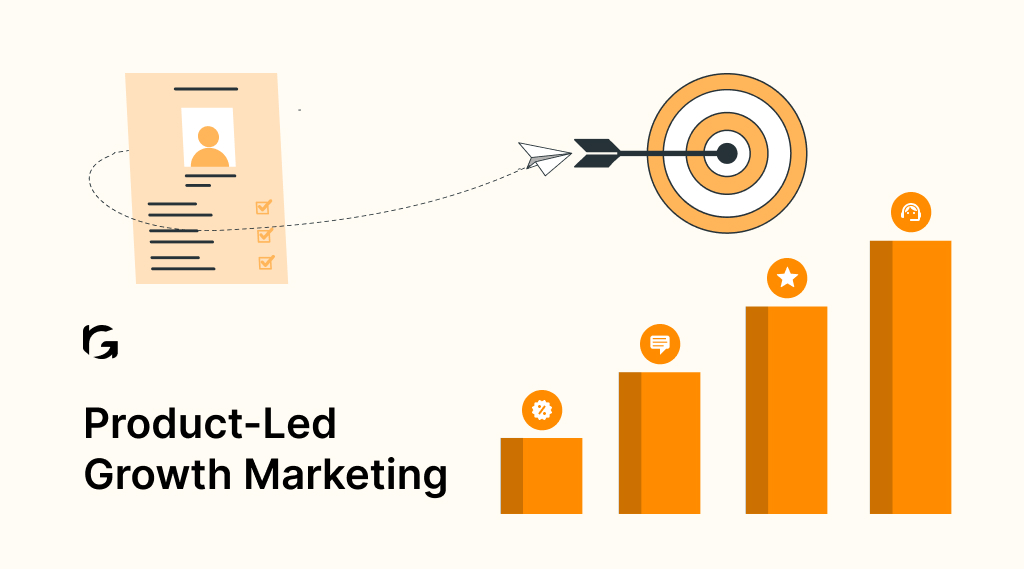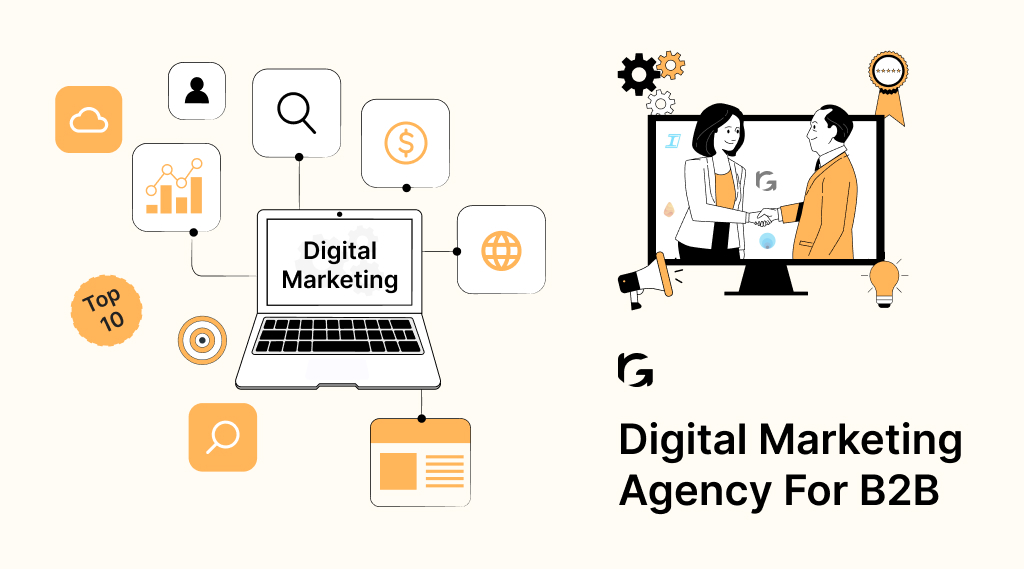Introduction
We are in the middle of a major shift in how people use and buy software, and it has not happened overnight. This move towards the need for connection at work has been building up for a while, changing how software companies operate.
A study states that one key change is that companies adopting self-service models see a 50% increase in conversion rates. With countless marketing strategies in the software-as-a-service world, picking the right one can be tough.
Now, let’s explore product-led growth marketing and why it might be the ideal approach for your business.
How does product-led growth work?
The product-led growth model is a way businesses use their products to do the selling and marketing for them. They make a great product that is super easy to use and often let people try it out for free or through a basic, free plan.
When people get to try the product and see how good it is for themselves, the product starts to pull in new customers on its own. If the product’s really solid, those who try it tend to stick around, pay for more features, and even recommend it to others.
In contrast, traditional marketing (sales-led growth) relies on the sales team to persuade customers to buy. Customers don’t engage with the product until they’ve already decided to purchase it. With the product-led model, however, customer engagement with the product drives purchases.
With the freemium or free trial system, potential customers (marketing qualified leads) use the product before paying for it. In a product-led business, monetization happens naturally as the customer finds solutions to their problems with your product.
Product-led growth vs sales-led growth vs marketing-led growth
| Aspects | Product-Led Growth (PLG) | Sales Led-Growth (SLG) | Marketing-Led Growth (MLG) |
| Channel | Utilizes self-serve channels like free trials and freemium models | Depends on the expertise of sales and marketing teams | Leverages content marketing, SEO, and paid advertising |
| Demand Generation | Relies on the product itself to generate demand | Relies on sales and marketing efforts to nurture customer relationships | Focuses on attracting and engaging prospects through various marketing campaigns |
| Monetization | Combines initial purchase with subsequent upselling and cross-selling | Focuses on maximizing revenue from the initial sale | Uses marketing strategies to drive both initial sales and ongoing revenue through nurturing campaigns |
| Retention | Driven by an exceptional user experience | Driven by customer success teams or support agents | Driven by continuous engagement and customer loyalty programs |
| Team Size | Requires smaller sales and marketing teams, with the product doing the heavy lifting | Requires larger sales and marketing teams to build relationships and close deals | Requires a well-equipped marketing team to execute various campaigns and analyze performance |
| Pricing Model | Often subscription-based, leading to slower but steady growth | Features high initial sale prices, leading to rapid but less sustainable growth | Can vary, but often involves both subscription and one-time purchase options to accommodate different customer segments |
| Profitability Timeline | Longer path to profitability due to low initial sale price, relies on upsells and cross-sells | Faster path to profitability with high-ticket initial sales | Moderate path to profitability, balancing initial sales with long-term customer value |
Using product-led growth as a go-to-market strategy
Product-led growth transforms your company’s go-to-market strategy by centering your product. Like other strategies, it’s a company-wide plan guiding how sales, marketing, customer success, engineering, and product teams measure success and drive growth.
Effective go-to-market strategies address these key questions:
Who is your target audience?
In a product-led approach, focus on selling to users, not just buyers.
How will they discover your product?
PLG leverages virality and word of mouth, with satisfied users sharing your product with friends and coworkers.
What motivates their purchase?
Your product should be more trustworthy, deliver greater value, and offer a better user experience than competitors.
What is their purchasing process?
Users should transition to buyers within the product itself or after experiencing it firsthand, rather than through sales representatives.
Product-led SaaS companies often use a freemium or free trial model, allowing users to experience the product without sales or marketing intermediaries. In a product-led experience, “paywalls” follow the value received, and pricing scales with usage and value.
This strategy expands your potential customer base early in their journey. It also requires your product to demonstrate its value quickly to convert users into paying customers.
Freemium and free trial models vary. Free trials provide the full product experience for a limited time (e.g., 14 or 30 days) or until a certain usage limit. Freemium allows indefinite use with some restrictions.
The three main freemium types are:
- Reduced features: Extra features require upgrading
- Reduced capacity or usage: Usage limits restrict access
- Reduced support: Tiered access to support
Companies may combine these types, as Heap does with reduced bandwidth and support in its freemium plan.
Regardless of the model, the goal is to get users into your product quickly and let them experience its value firsthand.
5 Product-led growth marketing strategy to learn in 2024

- Product-led businesses offer free trials or freemium models
- Personalize customer journey
- A/B test in-app messages for better feature adoption
- Increase advocacy with word-of-mouth marketing
- Show social proof to build trust
1. Product-led companies offer free trials or freemium models
Product-led companies use free trials or freemium models to let users try the product before paying. This approach is crucial for product-led growth because it shows users the product’s value upfront.
People are hesitant to buy something without testing it first. But when businesses offer a free trial or freemium option, they reduce the risk for users and increase the chances of converting them into paying customers.
Example: Slack offers a freemium model for its team collaboration software. Users can access basic features for free and experience the value of the product before deciding to upgrade to a paid plan for more advanced features.
2. Personalize customer journey
Personalization ensures that every user gets an experience that matches their needs and helps them achieve their goals.
To make this happen, you need to collect as much data as possible. This data should give you insights into what your customers need and want. You can gather this information from surveys, customer support tickets, product usage data, and more. Once you have your data, group users based on their goals and customize the experience for each group.
Example: Netflix uses personalization to recommend shows and movies to each user based on their viewing history.
3. A/B test in-app messages for better feature adoption
Getting users to quickly adopt new features is a smart way to grow your product. One effective method is using in-app messaging to guide users to new features.
To make this work well, run A/B tests on your in-app messages to see what resonates with your users. Experiment with different message content, timing, placement, format, and more to find out what clicks.
Example: Duolingo uses in-app messaging to introduce new features and keep users engaged in their language learning journey.
4. Increase advocacy with word-of-mouth marketing
Customer advocacy plays a big role in product-led growth. Word-of-mouth (WoM) marketing involves encouraging your customers to talk about your product with their friends, colleagues, and others.
This type of marketing is highly effective because people trust recommendations from those they know. The first step to boosting advocacy is creating a product people love.
Another way to encourage advocacy is by launching an NPS survey, identifying users with high scores, and asking them for a review. You can also reward your advocates with discounts and other perks.
Example: Dropbox grew significantly by offering extra storage space to users who referred their friends.
5. Show social proof to build trust
Showing social proof on your sign-up page is a great way to convince people to give your product a try. When done right, it builds trust by showing that others have already trusted you. You can add customer testimonials right on the sign-up form or highlight the number of users or customers you have.
Example: Airbnb uses social proof by displaying reviews and ratings from guests to encourage new users to book stays.
Wrap up
Some products may not perfectly suit a PLG approach and might do better with traditional marketing or direct sales. But if you are curious about PLG, it is a great way to quickly show users what your product can do.
At Revv Growth, we are here to help you explore PLG and see how it can fit into your business to boost your sales. Let’s chat about bringing PLG into your business and making it work for you!
FAQs
1. How can I measure the success of a Product-Led Growth strategy?
– Track user engagement, activation rates, conversion rates, retention, and NPS. These metrics show how well your product drives growth. Regularly reviewing these numbers will help you make data-driven decisions.
2. What are the common challenges in implementing a PLG strategy?
– Making the product intuitive and aligning teams can be tough. Using data effectively is also crucial. Overcoming these challenges requires strong cross-functional collaboration.
3. How do I transition from a sales-led to a product-led growth model?
– Start with free trials and gather user feedback. Focus on improving the product and reducing reliance on sales. Gradually shift your resources to product development and user support.
4. What role does user feedback play in PLG?
– It helps you understand needs and find pain points. Use it to refine and enhance your product. Continuous feedback loops are essential for ongoing improvement.
5. Can PLG work for all types of software products?
– Works best for easy-to-use products with quick value. Not ideal for complex, enterprise-level software. Evaluate your product’s suitability for PLG by considering its user experience and value delivery.


